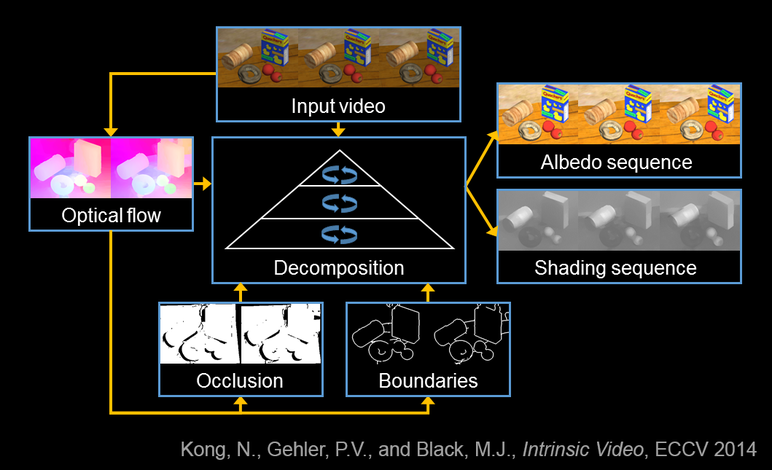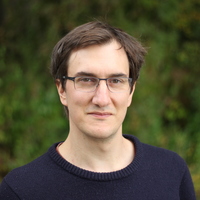Human Pose, Shape and Action
3D Pose from Images
2D Pose from Images
Beyond Motion Capture
Action and Behavior
Body Perception
Body Applications
Pose and Motion Priors
Clothing Models (2011-2015)
Reflectance Filtering
Learning on Manifolds
Markerless Animal Motion Capture
Multi-Camera Capture
2D Pose from Optical Flow
Body Perception
Neural Prosthetics and Decoding
Part-based Body Models
Intrinsic Depth
Lie Bodies
Layers, Time and Segmentation
Understanding Action Recognition (JHMDB)
Intrinsic Video
Intrinsic Images
Action Recognition with Tracking
Neural Control of Grasping
Flowing Puppets
Faces
Deformable Structures
Model-based Anthropometry
Modeling 3D Human Breathing
Optical flow in the LGN
FlowCap
Smooth Loops from Unconstrained Video
PCA Flow
Efficient and Scalable Inference
Motion Blur in Layers
Facade Segmentation
Smooth Metric Learning
Robust PCA
3D Recognition
Object Detection
Intrinsic Video

Intrinsic images such as albedo and shading are valuable for later stages of visual processing. Previous methods for extracting albedo and shading use either single images or images together with depth data. Instead, we defineintrinsic video estimation as the problem of extracting temporally coherent albedo and shading from video alone. Our approach exploits the assumption that albedo is constant over time while shading changes slowly. Optical flow aids in the accurate estimation of intrinsic video by providing temporal continuity as well as putative surface boundaries. Additionally, we find that the estimated albedo sequence can be used to improve optical flow accuracy in sequences with changing illumination. The approach makes only weak assumptions about the scene and we show that it substantially outperforms existing single-frame intrinsic image methods. We evaluate this quantitatively on synthetic sequences as well on challenging natural sequences with complex geometry, motion, and illumination.
Video
Members
Publications


